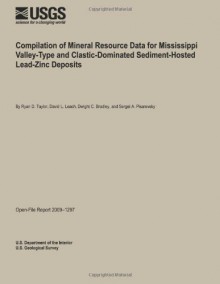Compilation of Mineral Resource Data for Mississippi Valley-Type and Clastic-Dominated Sediment-Hosted Lead-Zinc Deposits
This report contains a global compilation of the mineral resource data for sediment-hosted leadzinc (SH Pb-Zn) deposits. Sediment-hosted lead-zinc deposits are historically the most significant sources of lead and zinc, and are mined throughout the world. The most important SH Pb-Zn deposits are...
show more
This report contains a global compilation of the mineral resource data for sediment-hosted leadzinc (SH Pb-Zn) deposits. Sediment-hosted lead-zinc deposits are historically the most significant sources of lead and zinc, and are mined throughout the world. The most important SH Pb-Zn deposits are hosted in clastic-dominated sedimentary rock sequences (CD Pb-Zn) that are traditionally called sedimentary exhalative (SEDEX) deposits, and those in carbonate-dominated sequences that are known as Mississippi Valley-type (MVT) Pb-Zn deposits. In this report, we do not include sandstone-Pb, sandstone-hosted Pb, or Pb-Zn vein districts such as those in Freiberg, Germany, or Coeur d’Alene, Idaho, because these deposits probably represent different deposit types (Leach and others, 2005). We do not include fracture-controlled deposits in which fluorite is dominant and barite typically abundant (for example, Central Kentucky; Hansonburg, N. Mex.) or the stratabound fluorite-rich, but also leadand zinc-bearing deposits, such as those in southern Illinois, which are considered a genetic variant of carbonate-hosted Pb-Zn deposits (Leach and Sangster, 1993).
show less

